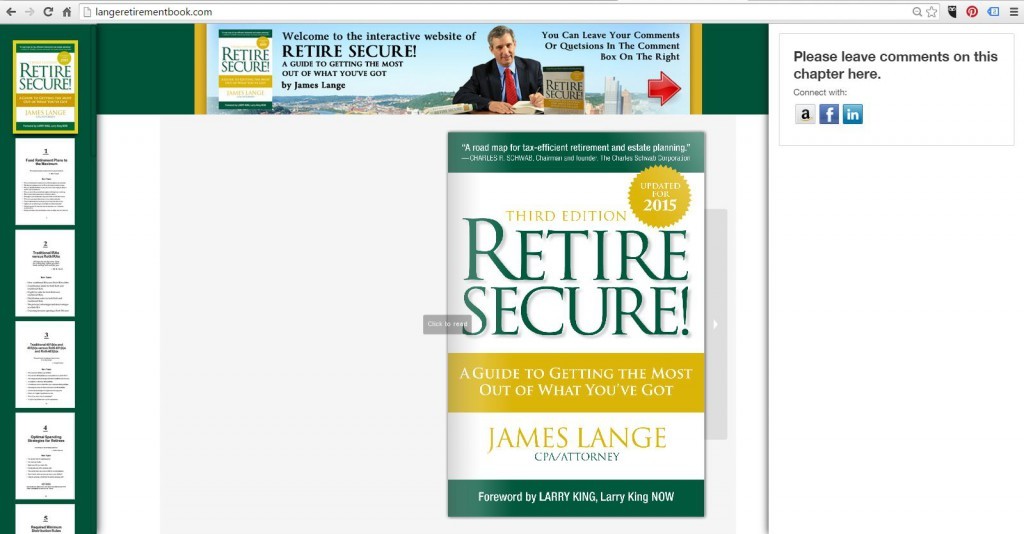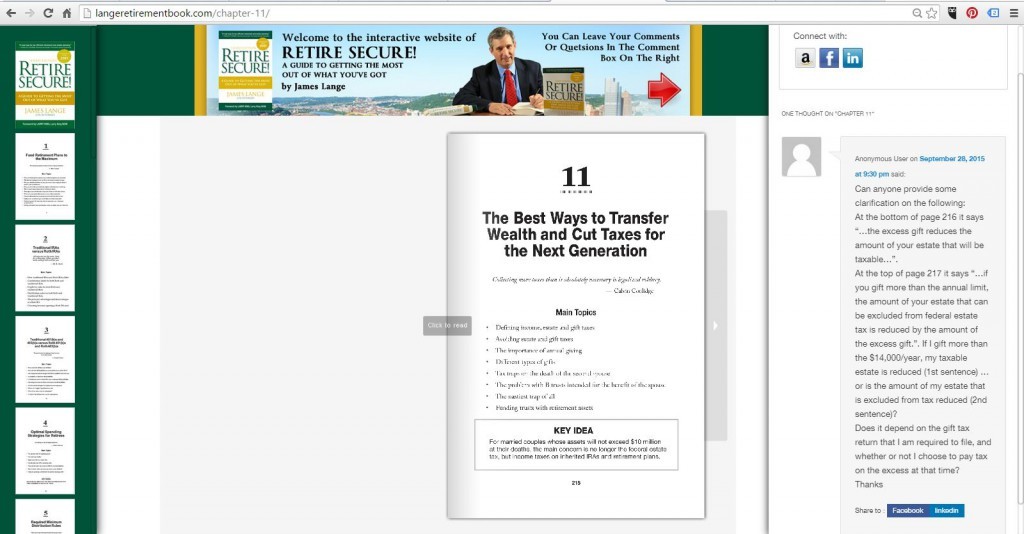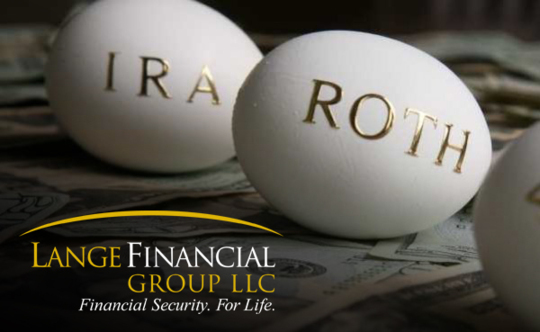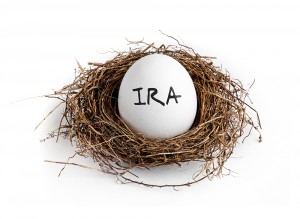Disclaimer: Please note that the Tax Cuts and Jobs Act of 2017 removed the ability for taxpayers to do any “recharacterizations” of Roth IRA conversions after 12/31/2017. The material below was created and published prior the passage of the Tax Cuts and Jobs Act of 2017.
Let’s face it. The stock market has declined a lot in the past few months.
Many people wonder if they should move to cash and do nothing with their investments. While we do not recommend trying to time the future moves in the stock market, the reality is that it is better to buy low and let it grow more in the future. This is especially true for Roth IRA conversions which result in long-term advantages when the account grows after the conversion. So maybe the time to convert is now.

But, what if the market continues to decline after you convert? One good thing about the current tax law is that you can undo a 2016 conversion as late as April 15, 2017 and perhaps even to October 15, 2017. This gives you a long time, over a year, to see if it grows. If it really dives after you convert, you can even do another conversion at a lower price and undo the first conversion later. The technical term for the undoing of a conversion is a recharacterization, because the Roth IRA is recharacterized as a traditional IRA by moving it back to the original or a different traditional IRA account. Converting early in the year is often recommended as it gives the account more time to grow before a decision must be made on a potential recharacterization.
We have written many articles about Roth IRAs and Roth conversions and included discussions of the extensive advantages they provide. We discuss conversions in our book Retire Secure! and we have written an entire book on Roth IRAs called The Roth Revolution. Both of these books can be purchased on Amazon, but we would be happy to send you a copy for free. To receive a free copy, call us at 412-521-2732, or email admin@paytaxeslater.com and ask for one. Just reference this newsletter offer! These articles and discussions go into much deeper detail on the many strategic ways to do Roth conversions to your advantage, depending on your current situation.
The Roth conversion amount will add to your taxable income, so there are many tax traps to consider when deciding how much to convert, such as …
- Higher tax rates and related tax surcharges and phaseouts of deductions first implemented for 2013 could result in extra tax if you convert too much.
- For people who are covered by Medicare parts B and/or D, and pay Medicare premiums, converting too much in 2016 can raise the Medicare premiums in 2018.
- Also, for medium- or lower-income people who get Social Security income, a conversion can make more of the Social Security subject to tax and also can turn tax-free long-term capital gains and qualified dividends into taxable amounts.
However, paying extra tax can sometimes be worth it in the long run if the Roth IRA account grows a lot after the conversion. These are just some of the things that should be considered in determining the best conversion amount.
Other considerations include the current and future financial and income tax situations of you and your beneficiaries. As we move further into an election year, the possibility of tax law changes looms ahead. Since future tax laws can affect the long-term success of a conversion early in 2016, they should also be considered.
Due to all these considerations and more, we stress the importance of “running the numbers” to be certain that the decisions you are making about Roth IRA conversions are absolutely right for your situation. In general, we like Roth IRA conversions for taxpayers who can make a conversion and stay in the same tax bracket they are currently in, and have the funds to pay for the Roth conversion from outside of the IRA. It is best to run the numbers to determine the most appropriate time and amount for your situation. This is a service that we have provided for hundreds of clients and currently offer free for our assets under management clients. We like to do these number running sessions with the clients in the room. This allows them the opportunity to bring up questions, adjust the scenarios, and feel extremely comfortable with the final decisions.
We usually find many people hesitant to make any changes in their investments when they decline in value. However, you should not pass up the opportunity to do a Roth conversion in a troubled market, as it could provide you and your family more financial security in the long run. Because of the many things to be considered when doing a Roth conversion, we suggest you discuss how much to convert in 2016 with your qualified advisor.
If you qualify, we will contact you to schedule an appointment with either James Lange or one of his tax experts.
Unfortunately, this Free Second Opinion is for qualified Western Pennsylvania residents only.




 Earlier this year, President Obama announced that he wants to create new rules that give financial advisors a “fiduciary” status under the law. I welcome this wholeheartedly because a fiduciary is required to always put his clients’ interests ahead of his own. This means that a financial advisor cannot make investment recommendations based on the commission they would receive from the investment, and that they must first consider the benefits that would be received by their client. As a fee-based advisor I have always served as a fiduciary to my clients and believe that it is an immensely important role.
Earlier this year, President Obama announced that he wants to create new rules that give financial advisors a “fiduciary” status under the law. I welcome this wholeheartedly because a fiduciary is required to always put his clients’ interests ahead of his own. This means that a financial advisor cannot make investment recommendations based on the commission they would receive from the investment, and that they must first consider the benefits that would be received by their client. As a fee-based advisor I have always served as a fiduciary to my clients and believe that it is an immensely important role. A nationally recognized IRA, Roth IRA conversion, and 401(k) expert, he is a regular speaker to both consumers and professional organizations. Jim is the creator of the Lange Cascading Beneficiary Plan™, a benchmark in retirement planning with the flexibility and control it offers the surviving spouse, and the founder of The Roth IRA Institute, created to train and educate financial advisors.
A nationally recognized IRA, Roth IRA conversion, and 401(k) expert, he is a regular speaker to both consumers and professional organizations. Jim is the creator of the Lange Cascading Beneficiary Plan™, a benchmark in retirement planning with the flexibility and control it offers the surviving spouse, and the founder of The Roth IRA Institute, created to train and educate financial advisors. The third edition of Retire Secure!, Retire Secure! A Guide to Making the Most Out of What You’ve Got is set to be released in the coming months, (stay tuned for exact date). This revised Third Edition of Retire Secure! covers how to develop an estate plan that, among other goals, seeks to continue the tax-favored status of your retirement plans or IRAs long after your death using the stretch or inherited IRA—a strategy that has been, and continues to be, threatened by congress. Lange has a history of staying ahead of the curve, seeing trends and changes in the tax laws and developing strategies for his clients in advance to keep them on the right path toward their financial goals. He was among the first to predict the coming changes to the tax law on Roth IRAs and wrote a peer-reviewed article for The Tax Advisor (official journal of the AICPA) that would go on to win article of the year in 1998. He is continuing this trend in this Third Edition by laying out the possibility of the death of the stretch or inherited IRA as we know it, and providing avenues to reach the same or better outcomes for your family including the use of charitable remainder unitrusts, or CRUTS and life insurance.
The third edition of Retire Secure!, Retire Secure! A Guide to Making the Most Out of What You’ve Got is set to be released in the coming months, (stay tuned for exact date). This revised Third Edition of Retire Secure! covers how to develop an estate plan that, among other goals, seeks to continue the tax-favored status of your retirement plans or IRAs long after your death using the stretch or inherited IRA—a strategy that has been, and continues to be, threatened by congress. Lange has a history of staying ahead of the curve, seeing trends and changes in the tax laws and developing strategies for his clients in advance to keep them on the right path toward their financial goals. He was among the first to predict the coming changes to the tax law on Roth IRAs and wrote a peer-reviewed article for The Tax Advisor (official journal of the AICPA) that would go on to win article of the year in 1998. He is continuing this trend in this Third Edition by laying out the possibility of the death of the stretch or inherited IRA as we know it, and providing avenues to reach the same or better outcomes for your family including the use of charitable remainder unitrusts, or CRUTS and life insurance.





